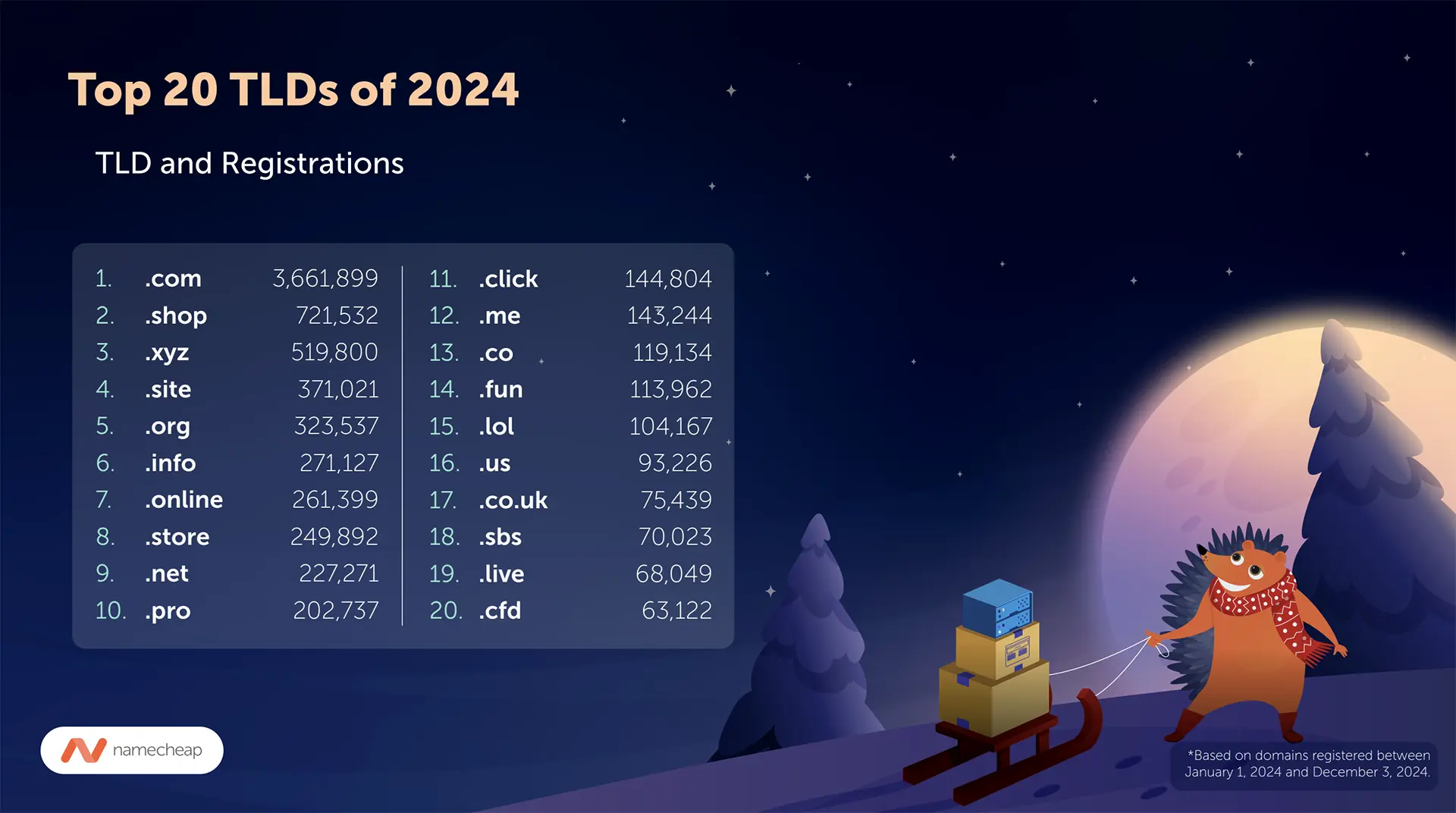

Domain Names |
Sponsored by |

|
 Google's lawsuit against the Lighthouse phishing syndicate exposes the industrial scale of cybercrime, highlighting how criminals exploit easy access to digital infrastructure to scam millions. The broader supply chain enabling such operations demands urgent reform.
Google's lawsuit against the Lighthouse phishing syndicate exposes the industrial scale of cybercrime, highlighting how criminals exploit easy access to digital infrastructure to scam millions. The broader supply chain enabling such operations demands urgent reform.
 As multistakeholder governance nears a critical juncture, leaders must navigate diverging views, geopolitical pressures and technological upheaval. With sovereignty concerns mounting, the Internet's institutions face a complex future that demands deft stewardship.
As multistakeholder governance nears a critical juncture, leaders must navigate diverging views, geopolitical pressures and technological upheaval. With sovereignty concerns mounting, the Internet's institutions face a complex future that demands deft stewardship.
 DOTZON's 2025 study analyzes over 410 corporate dotBrands to reveal how companies strengthen digital identities through custom top-level domains. Audi retains first place, while newcomers like CRS and rising performers such as Schwarz demonstrate growing strategic use.
DOTZON's 2025 study analyzes over 410 corporate dotBrands to reveal how companies strengthen digital identities through custom top-level domains. Audi retains first place, while newcomers like CRS and rising performers such as Schwarz demonstrate growing strategic use.
 Despite offering robust protection for the Domain Name System, DNSSEC suffers from poor adoption due to its complexity, cost, and operational risks. Automation and algorithmic improvements now offer practical solutions for broader deployment.
Despite offering robust protection for the Domain Name System, DNSSEC suffers from poor adoption due to its complexity, cost, and operational risks. Automation and algorithmic improvements now offer practical solutions for broader deployment.
 As artificial intelligence reshapes how users navigate the web, domain names may undergo explosive growth, potentially reaching tens of billions. A new infrastructure of trusted digital identities could become essential for AI agents.
As artificial intelligence reshapes how users navigate the web, domain names may undergo explosive growth, potentially reaching tens of billions. A new infrastructure of trusted digital identities could become essential for AI agents.
 Around the world, communities are racing to close the digital divide. From fiber deployments in rural areas to affordable smartphones and digital skills training, the goal is clear: connect the unconnected. But as we pursue that goal, a deeper question emerges that demands just as much urgency as infrastructure: When people get online, can they actually participate in the digital world?
Around the world, communities are racing to close the digital divide. From fiber deployments in rural areas to affordable smartphones and digital skills training, the goal is clear: connect the unconnected. But as we pursue that goal, a deeper question emerges that demands just as much urgency as infrastructure: When people get online, can they actually participate in the digital world?
 The legitimacy of the ICANN multistakeholder model and its governance framework are facing an existential threat requiring immediate attention. The recently announced results of the ICANN Nominating Committee highlight how the ICANN Board is captured by "affiliated" directors, which threatens its independence and ability to act for the public interest.
The legitimacy of the ICANN multistakeholder model and its governance framework are facing an existential threat requiring immediate attention. The recently announced results of the ICANN Nominating Committee highlight how the ICANN Board is captured by "affiliated" directors, which threatens its independence and ability to act for the public interest.
 Cybercriminals live by the tenet "If it ain't broke, don't fix it." They'll use the same tactics repeatedly until they no longer work, then switch things up. That's why CISOs and their security teams maintain constant vigilance. Underscoring this, recent analysis of global DNS activity found that new domains continue to be a major tactic for bad actors.
Cybercriminals live by the tenet "If it ain't broke, don't fix it." They'll use the same tactics repeatedly until they no longer work, then switch things up. That's why CISOs and their security teams maintain constant vigilance. Underscoring this, recent analysis of global DNS activity found that new domains continue to be a major tactic for bad actors.
 A Supreme Court judge in Mauritius has been appointed to investigate AFRINIC, Africa's IP address registry, following allegations of misconduct, legal irregularities, and criminal falsification. The inquiry marks a pivotal moment in African internet governance, with implications for regional digital infrastructure and the continent's credibility in managing critical online resources.
A Supreme Court judge in Mauritius has been appointed to investigate AFRINIC, Africa's IP address registry, following allegations of misconduct, legal irregularities, and criminal falsification. The inquiry marks a pivotal moment in African internet governance, with implications for regional digital infrastructure and the continent's credibility in managing critical online resources.
 Many previous pieces of research have focused on the desirability of a comprehensive scoring system, to be used for ranking results identified as part of a brand-protection solution, according to their potential level of threat. Such scoring systems offer the capability for identifying prioritised targets for further analysis, content tracking or enforcement actions.
Many previous pieces of research have focused on the desirability of a comprehensive scoring system, to be used for ranking results identified as part of a brand-protection solution, according to their potential level of threat. Such scoring systems offer the capability for identifying prioritised targets for further analysis, content tracking or enforcement actions.
 Today, I share a warning about serious changes to the Community Priority Evaluation (CPE) of the New gTLD Applicant Guidebook. They are not driven by public comment, but by a few voices within the SubPro Implementation Review Team - and they are very likely to lead to disastrous misappropriation of well-known community names, including those of Tribes, Indigenous Peoples and NGOs around the world.
Today, I share a warning about serious changes to the Community Priority Evaluation (CPE) of the New gTLD Applicant Guidebook. They are not driven by public comment, but by a few voices within the SubPro Implementation Review Team - and they are very likely to lead to disastrous misappropriation of well-known community names, including those of Tribes, Indigenous Peoples and NGOs around the world.
 What might look like a routine procedural dispute over votes is, in fact, a glaring reminder that Regional Internet Registries (RIRs) are now geopolitical pressure points - and that ICANN's oversight of RIR governance must evolve to meet these risks. On 23 June 2025, AFRINIC, the RIR that serves Africa, attempted to hold long-delayed elections to restore stability after years of legal battles and board paralysis. Yet instead of restoring trust, the process imploded almost immediately.
What might look like a routine procedural dispute over votes is, in fact, a glaring reminder that Regional Internet Registries (RIRs) are now geopolitical pressure points - and that ICANN's oversight of RIR governance must evolve to meet these risks. On 23 June 2025, AFRINIC, the RIR that serves Africa, attempted to hold long-delayed elections to restore stability after years of legal battles and board paralysis. Yet instead of restoring trust, the process imploded almost immediately.
 This study analyzes the differences in domain name and IP address strategies among a number of current mainstream artificial intelligence (AI) service providers. We find that these technical choices not only reflect deployment decisions but also deep-seated corporate knowledge and capabilities in Internet infrastructure service provision, as well as brand positioning and market strategies.
This study analyzes the differences in domain name and IP address strategies among a number of current mainstream artificial intelligence (AI) service providers. We find that these technical choices not only reflect deployment decisions but also deep-seated corporate knowledge and capabilities in Internet infrastructure service provision, as well as brand positioning and market strategies.
 At the 20th Internet Governance Forum in Lillestrøm, Norway, the UN Internet Governance Forum's dynamic coalition Internet Standards, Security and Safety (IS3C) released its new report on post-quantum policies. This report presents the findings of a collaborative study undertaken by IS3C and the French domain name registry Afnic and examines the critical need for Post-Quantum Cryptography (PQC) to achieve greater security in the ever-expanding global IoT landscape.
At the 20th Internet Governance Forum in Lillestrøm, Norway, the UN Internet Governance Forum's dynamic coalition Internet Standards, Security and Safety (IS3C) released its new report on post-quantum policies. This report presents the findings of a collaborative study undertaken by IS3C and the French domain name registry Afnic and examines the critical need for Post-Quantum Cryptography (PQC) to achieve greater security in the ever-expanding global IoT landscape.
 As published on June 24, 2025, it is with no surprise that the AFNIC was renewed as the backend registry provider of the .PARIS new generic Top-Level Domain. What caught my attention in the announcement was this paragraph: “Afnic’s remit will also be expanded to include communication and promotion of the .paris TLD, as well as the development of initiatives designed to increase its adoption by businesses and private individuals.”
As published on June 24, 2025, it is with no surprise that the AFNIC was renewed as the backend registry provider of the .PARIS new generic Top-Level Domain. What caught my attention in the announcement was this paragraph: “Afnic’s remit will also be expanded to include communication and promotion of the .paris TLD, as well as the development of initiatives designed to increase its adoption by businesses and private individuals.”
 Chinese APT Groups Exploit Global Domains in Sweeping Cyber Campaign
Chinese APT Groups Exploit Global Domains in Sweeping Cyber Campaign India Launches ‘.bank.in’ and ‘.fin.in’ Domains to Deter Financial Fraud
India Launches ‘.bank.in’ and ‘.fin.in’ Domains to Deter Financial Fraud Domain Trends Signal Shifting Tides in 2024
Domain Trends Signal Shifting Tides in 2024 PIR Reaches 11 Million .ORG Domains, Citing Growth and Online Safety Efforts
PIR Reaches 11 Million .ORG Domains, Citing Growth and Online Safety Efforts OpenAI Buys Chat.com, Redirected to ChatGPT
OpenAI Buys Chat.com, Redirected to ChatGPT Senate Urges Domain Registrars to Combat Russian Election Interference
Senate Urges Domain Registrars to Combat Russian Election InterferenceToday, the latest issue of The Domain Name Industry Brief Quarterly Report was released by DNIB.com, showing the second quarter of 2023 closed with 356.6 million domain name registrations across all top-level domains (TLDs), an increase of 1.7 million domain name registrations, or 0.5%, compared to the first quarter of 2023. more
Today, Verisign released the latest issue of The Domain Name Industry Brief, which shows that the first quarter of 2023 closed with 354.0 million domain name registrations across all top-level domains (TLDs), an increase of 3.5 million domain name registrations, or 1.0%, compared to the fourth quarter of 2022. more
Today, Verisign released the latest issue of The Domain Name Industry Brief, which shows that the fourth quarter of 2022 closed with 350.4 million domain name registrations across all top-level domains (TLDs), an increase of 0.5 million domain name registrations, or 0.1%, compared to the third quarter of 2022. Domain name registrations have increased by 8.7 million, or 2.6%, year over year. more
Today, we released the latest issue of The Domain Name Industry Brief, which shows that the third quarter of 2022 closed with 349.9 million domain name registrations across all top-level domains, a decrease of 1.6 million domain name registrations, or 0.4%, compared to the second quarter of 2022. Domain name registrations have increased by 11.5 million, or 3.4%, year over year. more
Today, we released the latest issue of The Domain Name Industry Brief, which shows that the second quarter of 2022 closed with 351.5 million domain name registrations across all top-level domains, an increase of 1.0 million domain name registrations, or 0.3%, compared to the first quarter of 2022. more
Today, we released the latest issue of The Domain Name Industry Brief, which shows that the first quarter of 2022 closed with 350.5 million domain name registrations across all top-level domains, an increase of 8.8 million domain name registrations, or 2.6%, compared to the fourth quarter of 2021. more
Today, we released the latest issue of The Domain Name Industry Brief, which shows that the fourth quarter of 2021 closed with 341.7 million domain name registrations across all top-level domains, an increase of 3.3 million domain name registrations, or 1.0%, compared to the third quarter of 2021. more